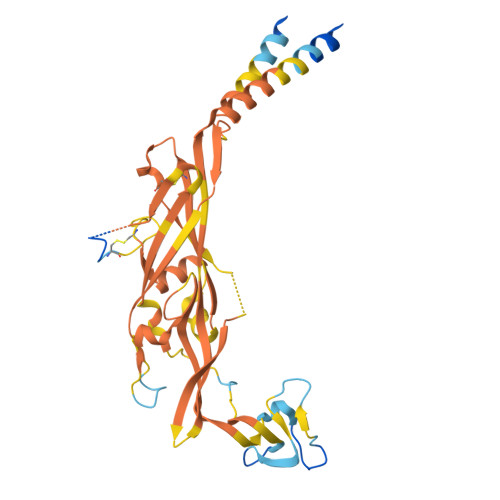Cryo-EM structures of the human P2X1 receptor reveal subtype-specific architecture and antagonism by supramolecular ligand-binding.
Oken, A.C., Lisi, N.E., Ditter, I.A., Shi, H., Nechiporuk, N.A., Mansoor, S.E.(2024) Nat Commun 15: 8490-8490
- PubMed: 39353889
- DOI: https://doi.org/10.1038/s41467-024-52636-4
- Primary Citation of Related Structures:
9C2A, 9C2B, 9C2C - PubMed Abstract:
P2X receptors are a family of seven trimeric non-selective cation channels that are activated by extracellular ATP to play roles in the cardiovascular, neuronal, and immune systems. Although it is known that the P2X1 receptor subtype has increased sensitivity to ATP and fast desensitization kinetics, an underlying molecular explanation for these subtype-selective features is lacking. Here we report high-resolution cryo-EM structures of the human P2X1 receptor in the apo closed, ATP-bound desensitized, and the high-affinity antagonist NF449-bound inhibited states. The apo closed and ATP-bound desensitized state structures of human P2X1 define subtype-specific properties such as distinct pore architecture and ATP-interacting residues. The NF449-bound inhibited state structure of human P2X1 reveals that NF449 has a unique dual-ligand supramolecular binding mode at the interface of neighboring protomers, inhibiting channel activation by overlapping with the canonical P2X receptor ATP-binding site. Altogether, these data define the molecular pharmacology of the human P2X1 receptor laying the foundation for structure-based drug design.
- Department of Chemical Physiology & Biochemistry, Oregon Health & Science University, Portland, OR, 97239, USA.
Organizational Affiliation:



















